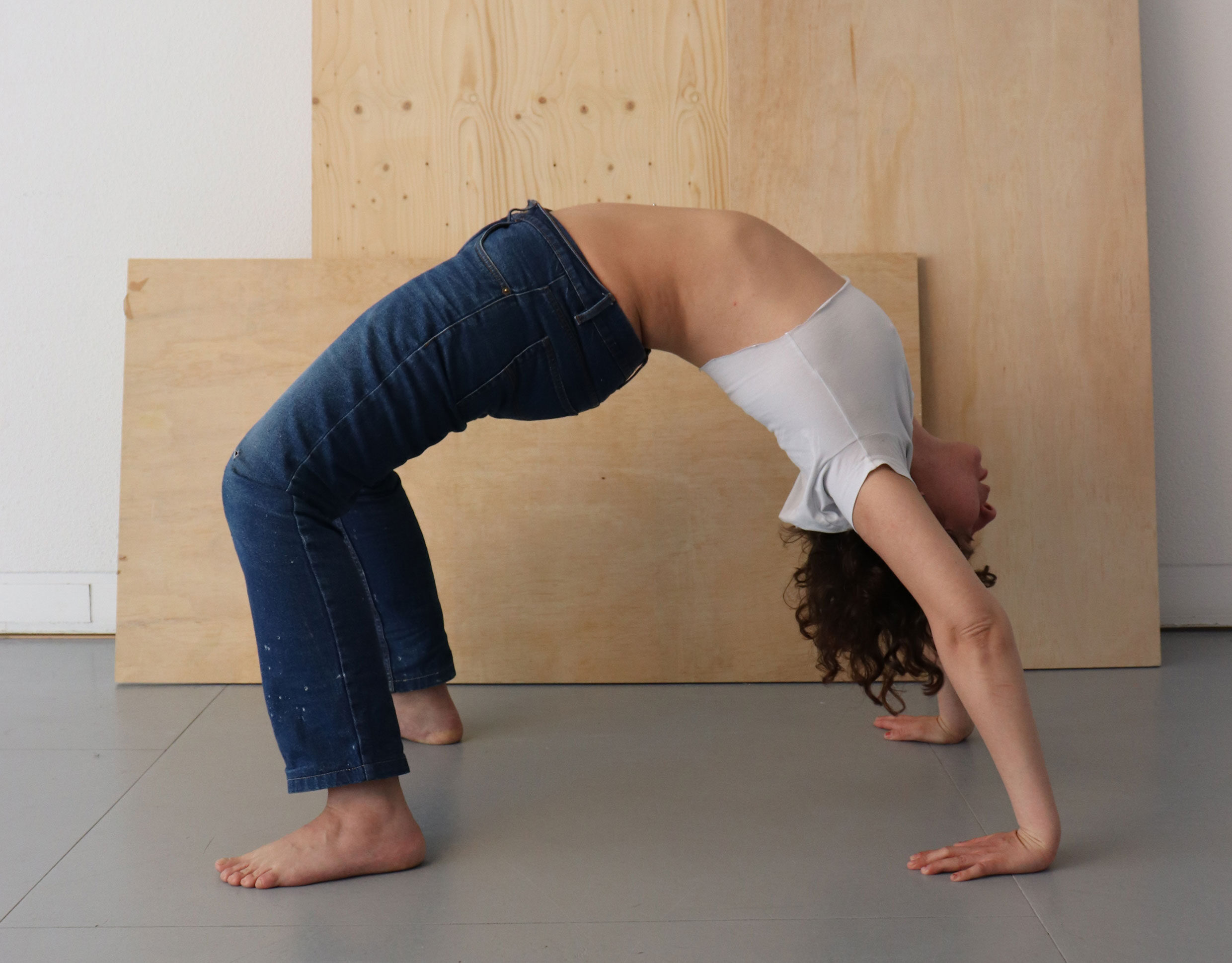Bodies and events
Throughout this whole process I got lost in my research quite a few times, but my main struggle was to resolve the very complicated research questions I had set for myself – ‘Can we use affect to create awareness of agency and relationality within the fashion system, and if so, can we stimulate affect through embodied practices and connect to the stories clothes tell?’.
I grappled with a lot of challenges. Firstly, the concept of affect was very hard to understand and required a lot of research. Secondly, I didn’t have a clear idea of how to contextualize philosophical conjectures like agency and relationality within the fashion system. I came across a lot of research papers discussing the anthropological and evolutionary impact material objects had had on humans, especially our cognitive development, but I couldn’t find research that addressed the affective dimension of objects. Furthermore, since I wanted to specifically use affect to connect us to the disembodied fashion system – the bodies and entities that have been hidden from us – I struggled a lot in finding ways systematize the research I was doing.
My hypothesis is quite novel. I postulate that our garments might be infused with a negative aura because of the exploitative practices in the fashion system. Maybe our clothes carry this negative energy into our lives through our wardrobes. Situating my research was hard and I received a lot of incompatible feedback which conflicted with the deliverables that the MCFP tutors expected from me.
My exercise workshop #artletics, based on the Laban Movement Analysis, was met with positive feedback. It was a clear practical application of my theoretical research. In addition to the embodied practice, I always had the idea of also making a tactile garment. Despite presenting a plethora of ideas, the feedback I often got was – why do you want to physicalize your research if you are addressing the intangible dimensions of fashion? If you want people to connect to something invisible, or even spiritual, why do you need a medium to communicate it. Movement activates ephemeral vitality – we can track how our heartrate fluctuates and then returns to normal. It allegorically resembles how affect is transmitted. There is no need for everything to be captured. I was happy with this feedback – and thought my movement workshops would be enough to form a praxis. But there was still a cry from tutors. How will the results of the workshops be documented? You need documentation to prove the validity is your work and position yourself as a practicing artist.
I brainstormed a few solutions for documenting my research using tactile garments. The idea was that garments should tell the stories of garments. We should not appropriate their narrative. But when….
… I discussed writing people’s secrets on garments, I heard: ‘If it is a secret why make it public’.
….I printed secrets in UV ink on garments, the uncomfortable response was: ‘Why create a screen? That means the secret can be mass produced.’
….I wanted to make special garments that would form part of a performance or exercise class. Or have a garments that would restrict or change your movement, and the tutors said – ‘But how would you choose which garments to use? What would the participants relationship be to that garment?’
This feedback of course was predicated on the fact that relationships need to be long-term and deep, but especially when it comes to garments, we often just have a short relationship with them. When we go shopping, we’ll try the garment on and then immediately know whether it works or not. We have clothing items we wear only for specific events. Our relationship with garments are often fleeting. It also begs the question when is my research about the secrets and when it’s about the bodily affective movements?
I also questioned using conventional formats of capturing research, especially words and language, I really wanted to move away from words. I opted to present my academic research in rhyming form. I felt that rhythmic metre would also stimulate affect (it definitely activates something in me) and situate my practical research more strongly in relation to my theoretical research. I then included a chants to my # artletics workshops. Vocalizing and voicing things out loud is immensely invigorating. I always joke that there is less violence in countries where karaoke is popular. Having access to an environment where it is encouraged to shout and the top of your lungs and purge all your stress through movement and song, lessens the chance of people exploding in public.
Even though I have created a large body of work this past year, there is still a lot to explore. It took me a long time to realize that I did not need to resolve my research question. I am theorizing a new paradigm – this new affective dimension of fashion or new affective approach towards fashion – and I won’t discover well-formed solutions overnight (insert cliché: ‘Rome wasn’t built in a day’). Finding ways to connect to new cosmologies and positioning clothing as events and not inanimate objects warrants further investigation, but I am on course to address and expose this blind spot in our human-centered interactions with the world.

